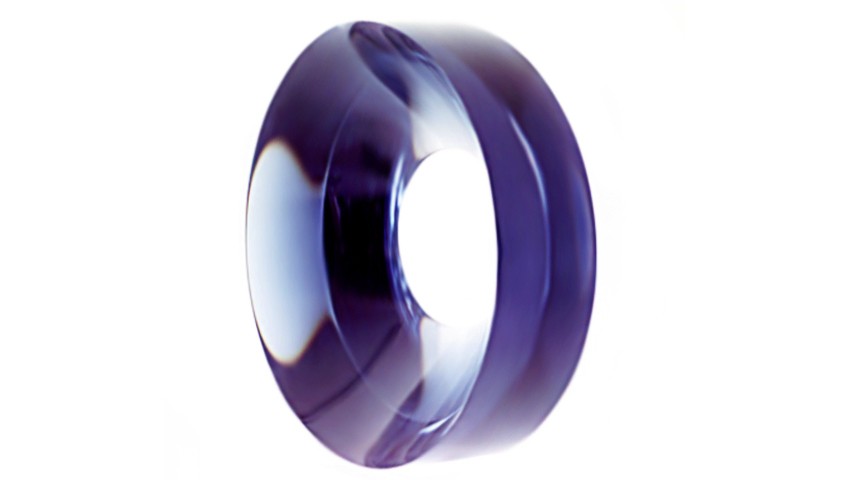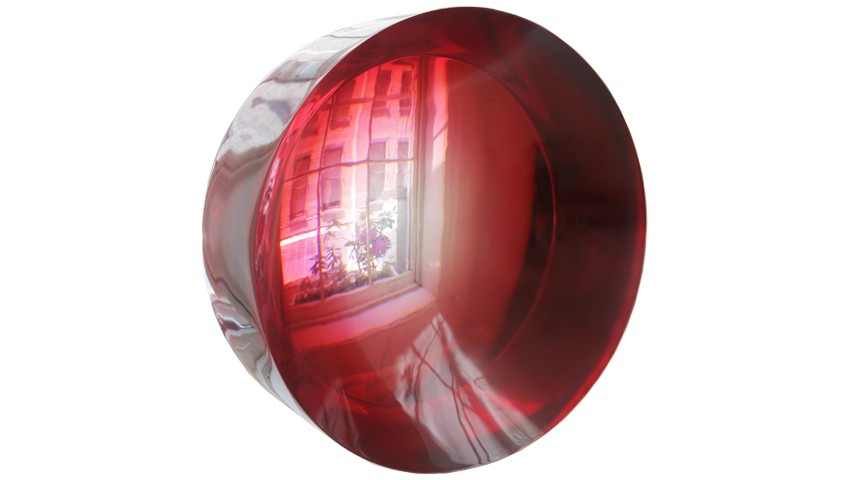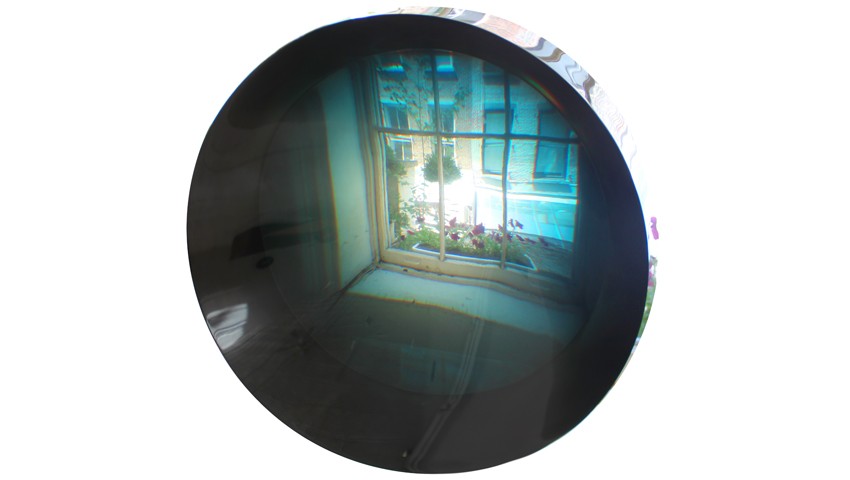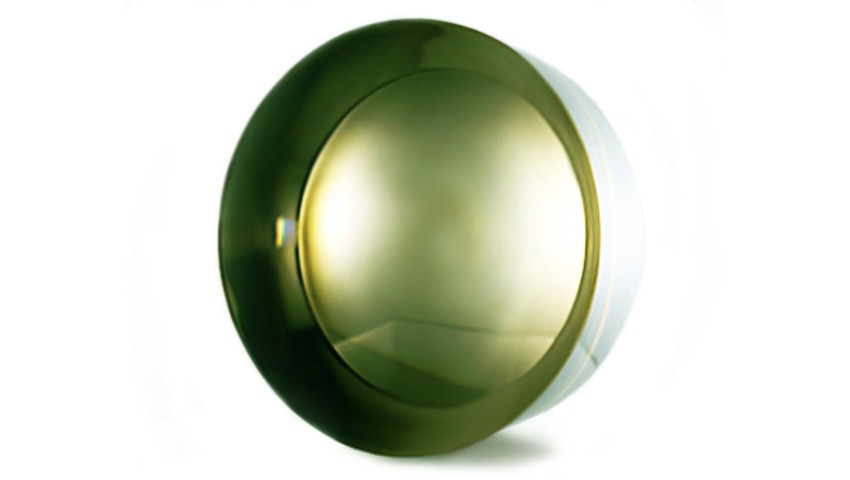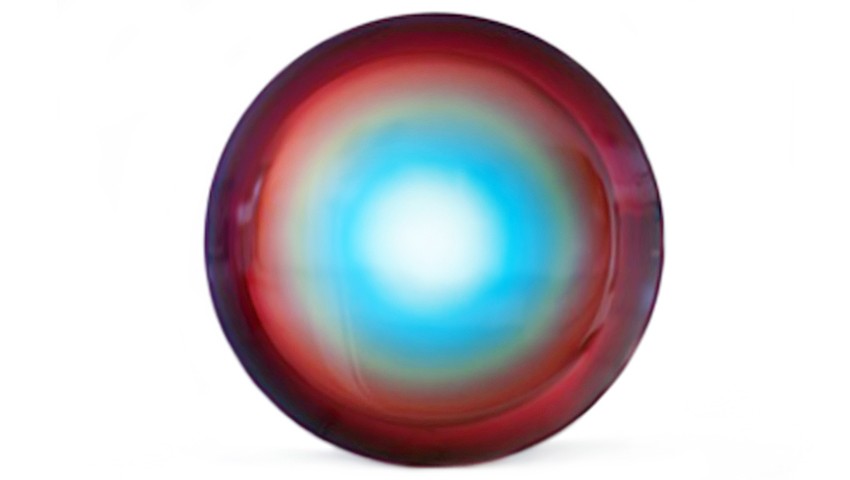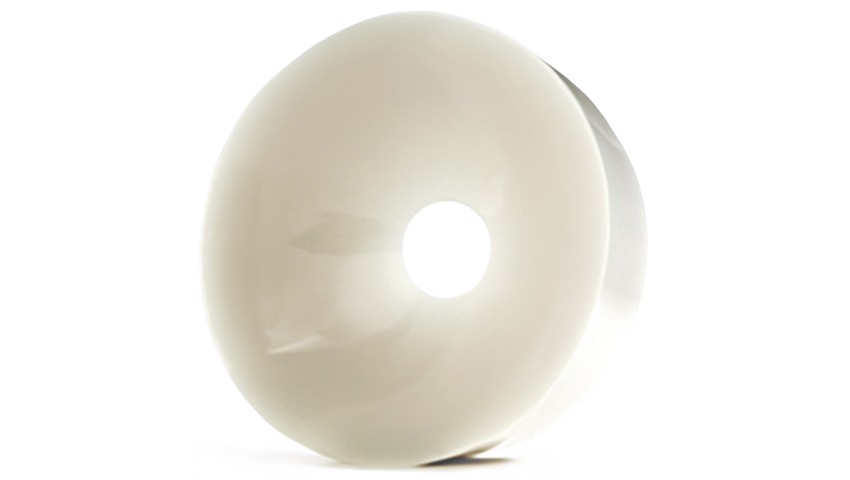ART-PRESENTATION: Fred Eversley-Chromospheres
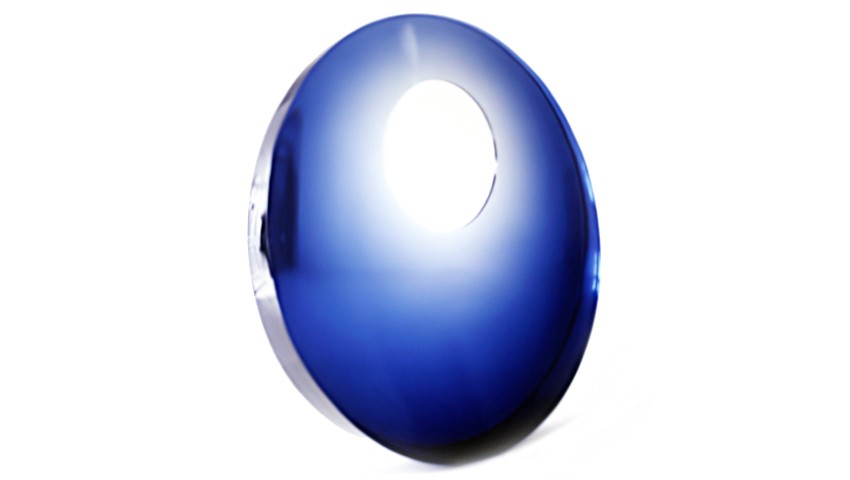 Fred Eversley is one of a group of artists associated with the 1960s L.A. “finish fetish” movement that paralleled Minimal Art in New York. Eversley developed a process that involves spinning liquid plastic around a vertical axis until the centrifugal forces create a concave surface. Evoking mirrors or large optical lenses, many of Eversley’s sculptures incorporate parabolic curves.
Fred Eversley is one of a group of artists associated with the 1960s L.A. “finish fetish” movement that paralleled Minimal Art in New York. Eversley developed a process that involves spinning liquid plastic around a vertical axis until the centrifugal forces create a concave surface. Evoking mirrors or large optical lenses, many of Eversley’s sculptures incorporate parabolic curves.
By Dimitris Lempesis
Photo: Fred Eversley Archive
The latest examples of Fred Eversley’s iconic Parabolic Lens sculptures are on presentation in his silo exhibition at David Kordansky Gallery. These works are alluring and seductive, and the resulting illusion draws the viewer into them by reflecting back his or her image and generate complex and highly luminous optical events, encapsulating the mechanics of sight and the action of physical and metaphysical energies. Fred Eversley was born in Brooklyn, New York, in 1941. His father was an aircraft engineering executive for Republic Aviation. Eversley initially followed that path, attending Brooklyn Technical High school and then Carnegie Institute of Technology, where he received a degree in electrical engineering. Postponing an opportunity to pursue medicine and bio-medical engineering, Eversley first came to Southern California with the intention of temporarily entering the aerospace industry, and was employed at Wyle Laboratories, as a senior project engineer. In 1967 after a serious car accident he decided to quit his job to pursue a career in art. He is producing multicolor, multilayer cast polyester sculptures informed by his knowledge of technology, scientific principles, the properties of various materials and his ability to develop his own specialized tools to manipulate them. Spinning liquid resin and dyes in molds affixed to turntables fashioned from lathes, potter’s wheels, and repurposed industrial machinery, he produced sculptures that in turn initiated a focused yet open-ended body of work that continues to the present day. By adjusting the saturation of his dyes or pigments, the thickness of each layer of poured resin, the amount of catalyst responsible for eventually hardening it, and the speed at which he spins the mold, Eversley creates the Parabolic Lenses, disc-like objects that contain a wide variety of chromatic effects and varying degrees of transparency. These features only fully emerge after each sculpture undergoes a long polishing process whose technical and physical demands far exceed those of the casting itself. Eversley says: “The parabola happens to be the only mathematic shape that concentrates all forms of known energy to the same single focal point”. While some of the works on view in the exhibition shift the old color combination into new orders, others are radiant two- and three-color lenses that make use of the entire color spectrum. Also on view are monochromatic lenses so saturated or dark that they appear to be completely opaque mirrors. In its own way, each of these works demonstrates how Eversley reveals fundamental properties of energy by harnessing time, gravity and centrifugal force to create parabolic forms and distribute color and matter within them.
Info: David Kordansky Gallery, 5130 W. Edgewood Pl., Los Angeles, Duration: 12/1-2/3/19, Days & Hours: Tue-Sat 10:00-18:00, http://davidkordanskygallery.com
